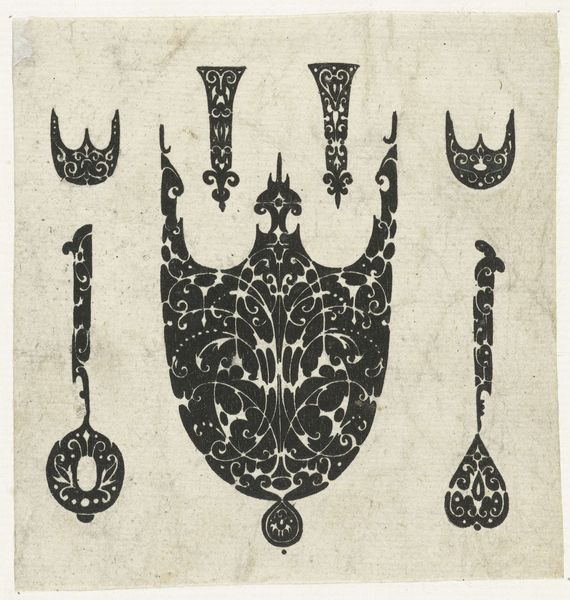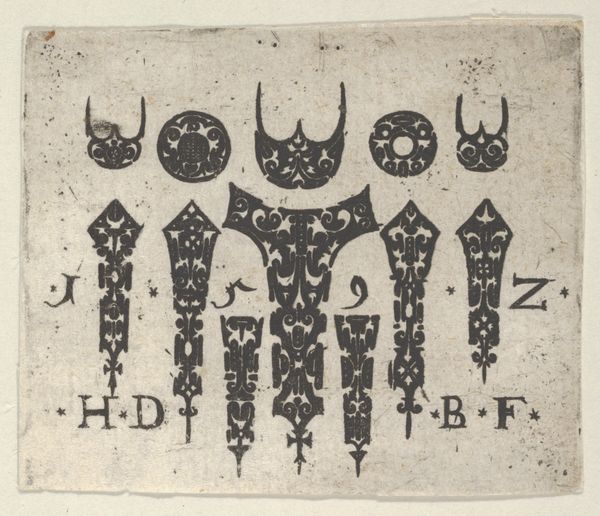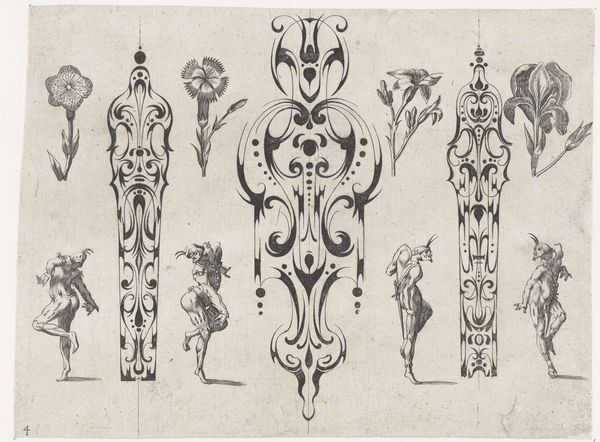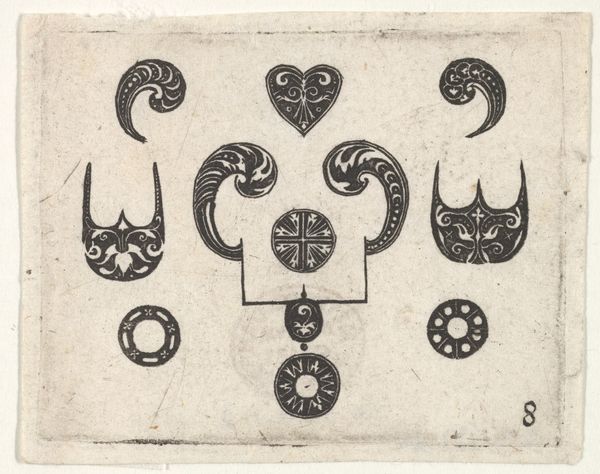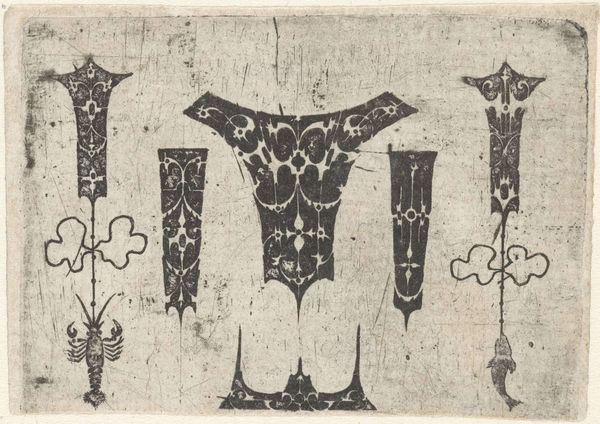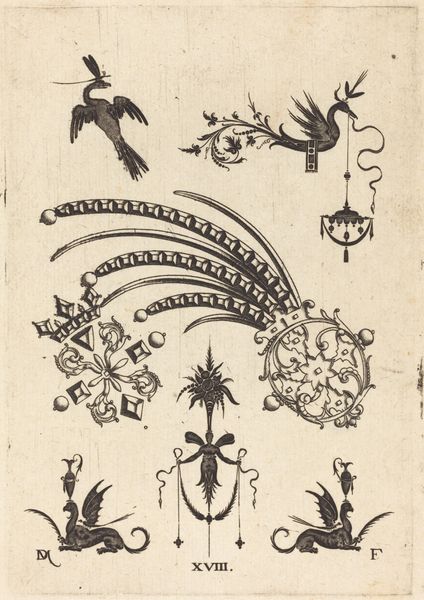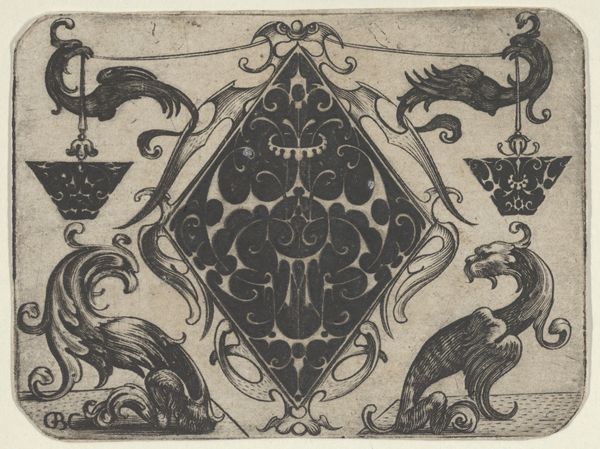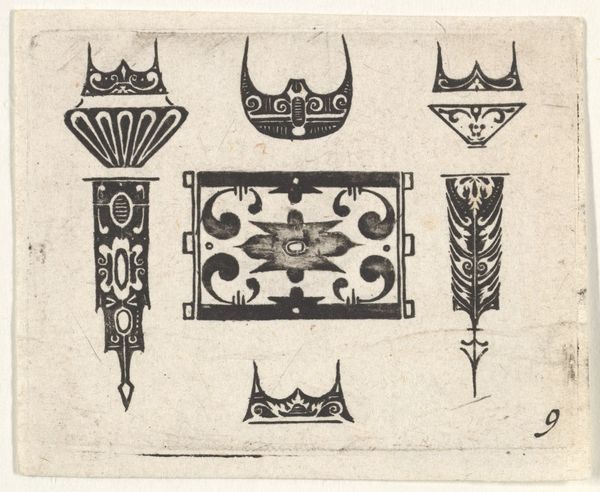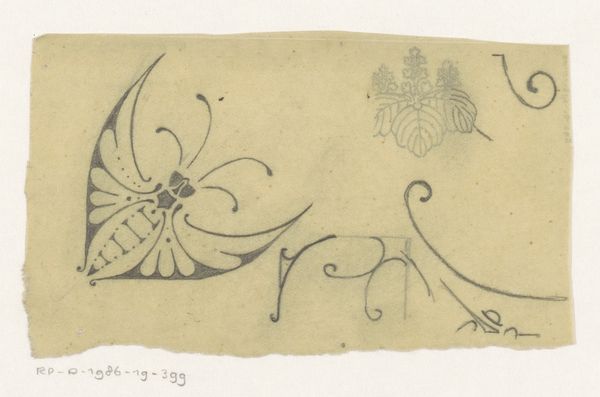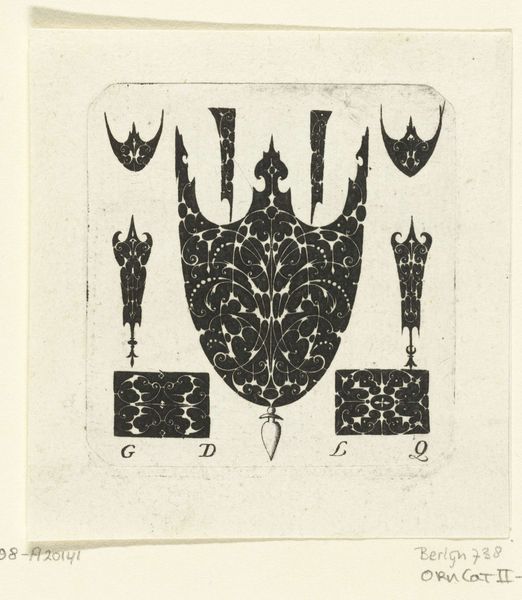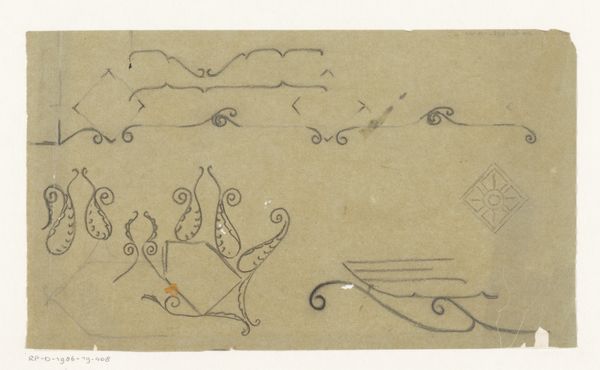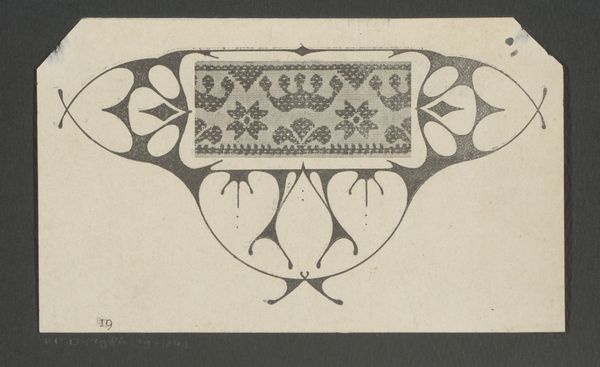
drawing, graphic-art, ornament, print, ink
#
drawing
#
graphic-art
#
ornament
# print
#
mannerism
#
ink
#
geometric
#
decorative-art
Dimensions: height 82 mm, width 186 mm
Copyright: Rijks Museum: Open Domain
This print, by Guillaume de la Quewellerie, presents us with an array of black ornaments rendered with striking precision. These delicate forms are achieved through the process of engraving, where lines are incised into a metal plate, inked, and then transferred to paper. Here, the stark contrast between the black ink and the off-white paper is particularly striking. This technique allows for incredibly fine details, as we can see from the sinuous lines of the central lozenge, the keys, and helmet that are adorned with floral motifs. Prints like this were not intended as artworks in themselves, but as pattern sources for craftsmen. They provided inspiration for artisans working in various media, from metalwork to textiles. This print embodies the interdisciplinary nature of creativity in the early modern period, when the boundaries between art, craft, and design were more fluid than they are today. It serves as a reminder that even the most functional objects can possess a high degree of artistry.
Comments
No comments
Be the first to comment and join the conversation on the ultimate creative platform.
